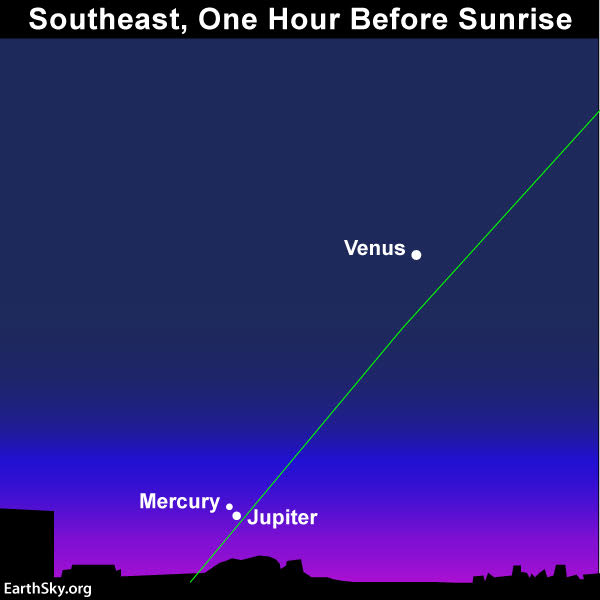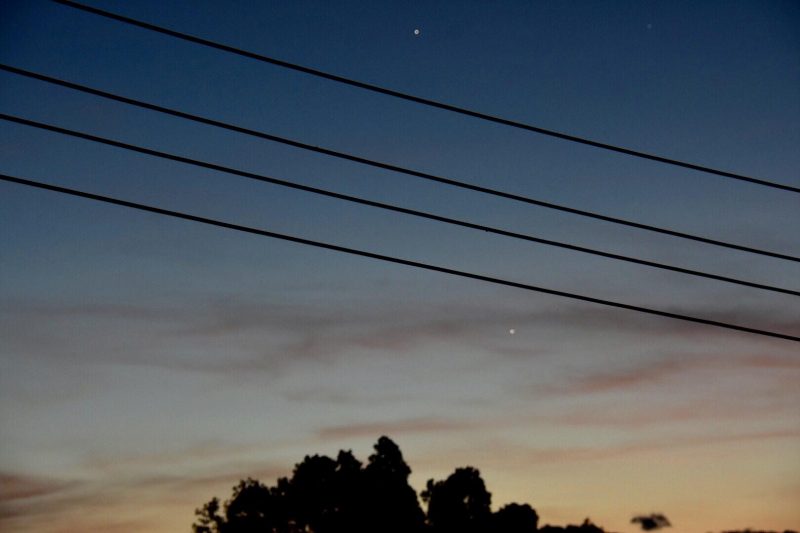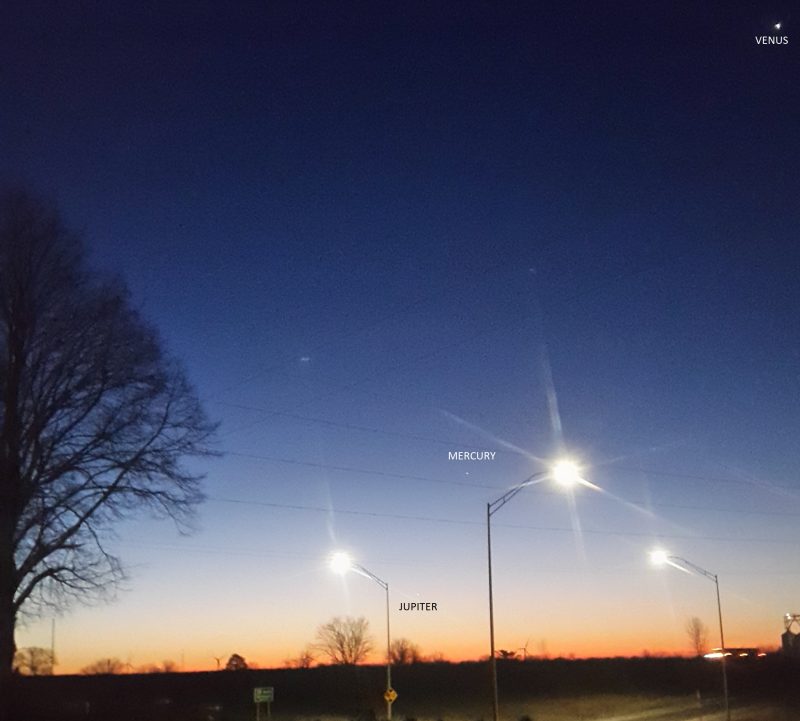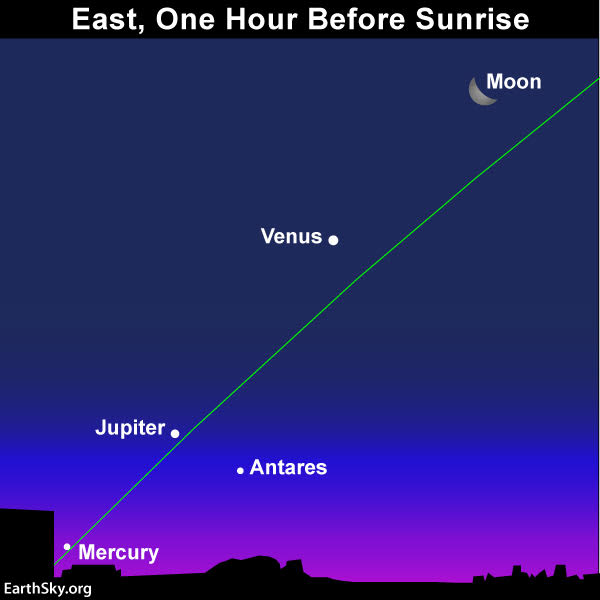
If you’ve been watching Venus in the east at dawn, you know it’s very, very bright now and high in the sky before the break of day. If you could tear your eyes away from the sight of dazzling Venus – and look close to the sunrise point before sunup – you would also see the second-brightest planet, Jupiter, coming into view. Plus, Mercury is in the east before sunup, too, on a line between Venus and Jupiter. This week is a wonderful – albeit challenging – time to watch for Jupiter and Mercury. From around December 19 to 21, you might be able to glimpse Jupiter and Mercury inching closer together on our sky’s dome. Their close-knit conjunction will come on December 21, 2018, the day of the December solstice.
At conjunction, Mercury and Jupiter will be 0.9 degrees apart. That’s about two moon-diameters.
Jupiter is brighter than Mercury at -1.8 magnitude. Mercury is fainter, but fairly bright, too, at magnitude -0.5. They are bright, but both worlds are near the sunrise. You’ll see them only in a sky illuminated with bright twilight. If you see only one world low in the twilight, that’ll be Jupiter. If that’s all you see, use your binoculars to pick out Mercury, and then remove the binoculars and try to see Mercury with only your eyes.
These planets will be visible in the same field of view of a low-power telescope, or binoculars, around December 21.



Jupiter is now rising about an hour before the sun. It’s climbing upward in the east toward Mercury, as Mercury – now past its greatest elongation, or greatest separation from the sun on our sky’s dome – is sinking downward toward Jupiter.
Mercury – the innermost world in our solar system – is due to sink back into the sun’s glare, as it always does. Its comings and goings in our sky caused the early stargazers to name Mercury for their fleet-footed messenger god. Because Mercury is here-today-and-gone-tomorrow, modern stargazers call it the most elusive planet. Yet – during this December 2018 apparition of Mercury – the planet hangs around a bit. Though sinking sunward, Mercury will still rise a good hour before the sun on the last day of 2018.
And then there’s Jupiter. It’s the biggest planet in our solar system and – in contrast to Mercury – Jupiter may seem a bit stodgy in its unchanging, powerful brightness in our sky and in its regular movement from one year to the next. It’s easy to see why the early stargazers named Jupiter for the king of their gods. This month, Jupiter climbs rapidly out of the glare of sunrise, coming up a solid two hours before the sun by the month’s end from most places worldwide.
So look for Mercury and Jupiter in the days leading up to their December 21 conjunction, and, of course, watch on the day of the conjunction itself.
Then, as the year draws to a close, watch for a picturesque line-up of the waning crescent moon with Venus, Jupiter and Mercury, about an hour before sunrise on December 31, as shown on the sky chart below.

Bottom line: Two bright planets – Jupiter and Mercury – will be in conjunction on December 21, 2018. Watch for them in the morning on and around that date! They are very low in the east before sunrise.
EarthSky lunar calendars are cool! They make great gifts. Order now. Going fast!
Want to see 2018’s brightest comet? How to see comet 46P/Wirtanen











